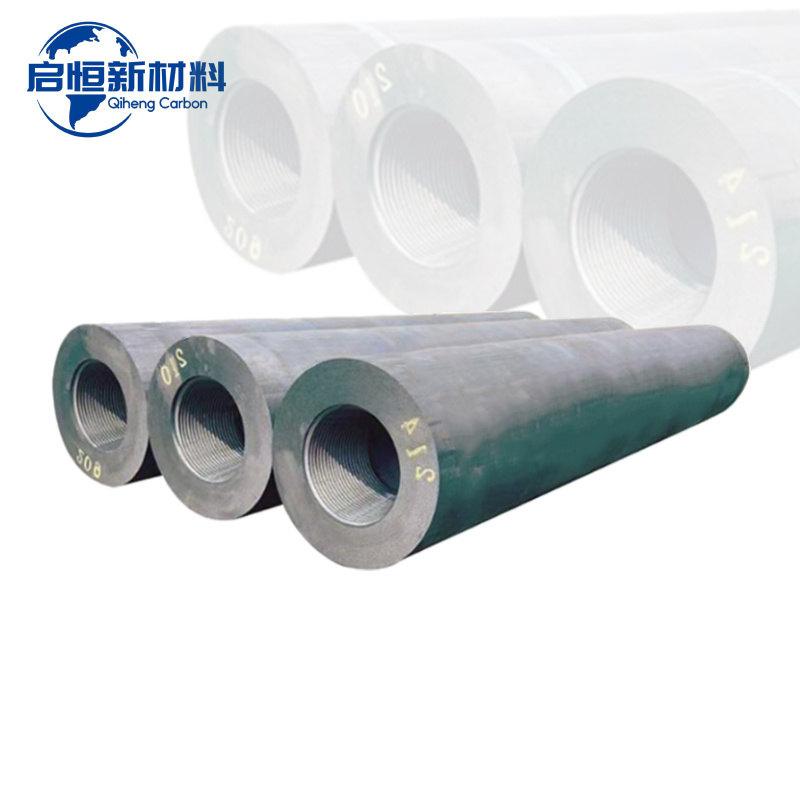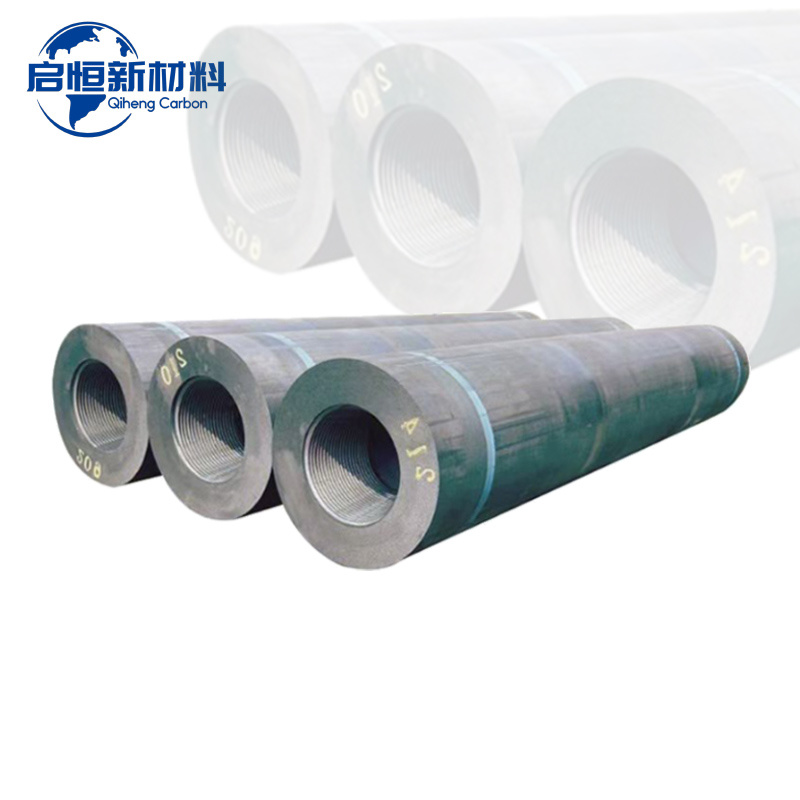The Comprehensive Evolution of Graphite Electrodes in the Metallurgical Industry
Summary:
The Comprehensive Evolution of Graphite Electrodes in the Metallurgical Industry
Table of Contents
1. Introduction to Graphite Electrodes
2. Historical Development of Graphite Electrodes
3. Types of Graphite Electrodes Used in Metallurgy
4. The Manufacturing Process of Graphite Electrodes
5. Applications of Graphite Electrodes in the Metallurgical Industry
6. Challenge

The Comprehensive Evolution of Graphite Electrodes in the Metallurgical Industry
Table of Contents
- 1. Introduction to Graphite Electrodes
- 2. Historical Development of Graphite Electrodes
- 3. Types of Graphite Electrodes Used in Metallurgy
- 4. The Manufacturing Process of Graphite Electrodes
- 5. Applications of Graphite Electrodes in the Metallurgical Industry
- 6. Challenges and Innovations in Graphite Electrode Technology
- 7. Future Outlook: The Role of Graphite Electrodes
- 8. Conclusion
- 9. Frequently Asked Questions
1. Introduction to Graphite Electrodes
Graphite electrodes serve a critical role in the **metallurgical industry**, primarily in **electric arc furnaces** (EAFs) and **foundries**. As industries advance, the demand for efficient and sustainable steel production methods has led to significant advancements in the use of graphite electrodes. These electrodes are essential for conducting electricity during the melting process, and their evolution reflects the broader trends in materials science and industrial engineering.
2. Historical Development of Graphite Electrodes
The journey of graphite electrodes began in the late 19th century. Initially, they were made from natural graphite, which had limitations in terms of purity and performance. The advent of **synthetic graphite** in the 1950s marked a significant turning point, facilitating improved electrical conductivity and thermal resistance. This innovation enabled manufacturers to produce higher-quality steel more efficiently.
By the 1970s, the emergence of **continuous casting technology** opened new avenues for graphite electrode utilization. This technology allowed for increased production rates and better quality steel, further solidifying the importance of graphite electrodes in the metallurgical landscape. The ongoing quest for sustainability has also dictated the evolution of these electrodes, emphasizing the need for recycled and eco-friendly materials.
3. Types of Graphite Electrodes Used in Metallurgy
In metallurgy, various types of graphite electrodes are employed, each catering to specific applications:
3.1 Ultra-High Power Graphite Electrodes
Ultra-high power (UHP) graphite electrodes are designed to operate at higher power levels, making them suitable for high-capacity EAFs. Their enhanced thermal conductivity and mechanical strength enable efficient steel production.
3.2 High Power Graphite Electrodes
High power (HP) graphite electrodes serve as a balanced option for medium-capacity furnaces. They provide durable performance for various steel grades while maintaining cost-effectiveness.
3.3 Regular Power Graphite Electrodes
Regular power (RP) graphite electrodes are typically used in smaller furnaces or for lower capacity applications. While not as efficient as UHP or HP electrodes, they remain integral to specific operations.
3.4 Specialty Graphite Electrodes
Specialty electrodes are tailored for unique applications, such as those requiring specific chemical resistance or thermal properties. These electrodes highlight the versatility of graphite in industrial applications.
4. The Manufacturing Process of Graphite Electrodes
The production of graphite electrodes involves several steps, ensuring high standards of quality and performance. The primary stages include:
4.1 Raw Material Selection
The manufacturing process begins with the selection of high-quality raw materials, primarily **petroleum coke** and **pitch**. The purity and properties of these materials significantly influence the final product.
4.2 Mixing and Molding
The selected materials are mixed and molded into electrode shapes. This step is crucial, as it lays the foundation for the electrode's structural integrity and performance characteristics.
4.3 Baking and Graphitization
The molded electrodes undergo a baking process at high temperatures to convert them into graphite. This step, known as **graphitization**, enhances the electrical and thermal conductivity of the electrodes.
4.4 Machining and Quality Control
Post-graphitization, the electrodes are machined to precise specifications. Quality control measures are employed to ensure each electrode meets industry standards, focusing on factors like density, resistivity, and mechanical strength.
5. Applications of Graphite Electrodes in the Metallurgical Industry
Graphite electrodes are primarily used in electric arc furnaces for **steelmaking**, but they also find applications in various sectors:
5.1 Steel Production
The most significant application of graphite electrodes is in steel production. EAFs utilize these electrodes to melt scrap steel, enabling a sustainable approach to steel manufacturing.
5.2 Non-Ferrous Metal Production
Graphite electrodes are also used in the production of non-ferrous metals, contributing to the recycling of materials like copper and aluminum.
5.3 Foundries and Casting
In foundries, graphite electrodes play a crucial role in melting and alloying materials for casting processes, ensuring high-quality metallurgical products.
6. Challenges and Innovations in Graphite Electrode Technology
Despite their advantages, the graphite electrode industry faces several challenges:
6.1 Supply Chain Issues
Global supply chain disruptions have impacted the availability of raw materials, leading to fluctuations in electrode production costs.
6.2 Environmental Concerns
The production process of graphite electrodes raises environmental concerns, prompting the industry to seek eco-friendly alternatives and recycling solutions.
6.3 Technological Advances
Innovations in electrode design and materials are continually evolving to enhance performance. Research into **composite materials** and other substitutes may redefine future applications.
7. Future Outlook: The Role of Graphite Electrodes
As industries pivot towards sustainable practices, the role of graphite electrodes is likely to evolve. The ongoing development of advanced materials and technologies could lead to more efficient and environmentally friendly manufacturing processes.
The integration of **automation** and **smart technologies** in the production of graphite electrodes may streamline operations and improve quality control. Additionally, research into new applications beyond traditional metallurgy could expand the utility of graphite in various sectors.
8. Conclusion
The history of graphite electrodes in the metallurgical industry is a testament to human ingenuity and the quest for efficiency in steel production. From their humble beginnings to their critical role in modern manufacturing, graphite electrodes have continually evolved to meet the demands of the industry. As we look to the future, it is clear that innovation will remain at the forefront, ensuring that graphite electrodes not only survive but thrive in an ever-changing industrial landscape.
9. Frequently Asked Questions
What are graphite electrodes made of?
Graphite electrodes are primarily composed of petroleum coke and pitch, which are processed through baking and graphitization to enhance their conductive properties.
What is the main use of graphite electrodes in metallurgy?
The primary use of graphite electrodes in metallurgy is in electric arc furnaces for steel production, allowing for efficient melting and recycling of scrap steel.
How do graphite electrodes contribute to sustainability?
Graphite electrodes facilitate the recycling of steel and non-ferrous metals, promoting sustainable practices in manufacturing while reducing reliance on virgin materials.
What challenges does the graphite electrode industry face?
The industry faces challenges such as supply chain disruptions, environmental concerns regarding production, and the need for continuous technological innovation.
What does the future hold for graphite electrodes?
The future of graphite electrodes will likely include advancements in materials, automation in production, and potential applications in new industries, emphasizing sustainability and efficiency.
Focus On Hot Spots
RP Graphite Electrodes: Transforming Conductivity in Metallurgical Processes
RP Graphite Electrodes: Enhancing Conductivity in Metallurgical Applications
Table of Contents
1. Introduction to RP Graphite Electrodes
2. Understanding Graphite and Its Properties
3. The Role of RP Graphite Electrodes in Metallurgy
4. Benefits of Using RP Graphite Electrodes
5. The Manufacturing Process of RP Graphite Electrodes
6. Applications of RP Graphite Electrodes
The Essential Guide to Graphite Blocks in Metallurgy and Energy Industries
Graphite blocks are pivotal materials in the metallurgy and energy industries, particularly within the non-metallic mineral products sector. These blocks, made from natural or synthetic graphite, possess unique properties that make them suitable for a wide range of applications. One of the most notable characteristics of graphite is its excellent thermal and electrical conductivity. This property









